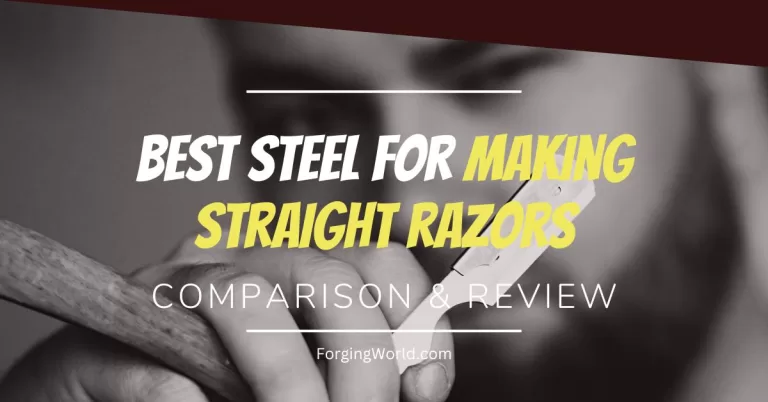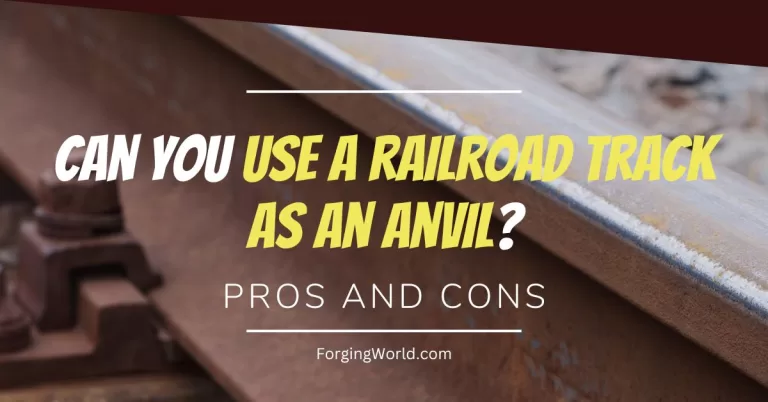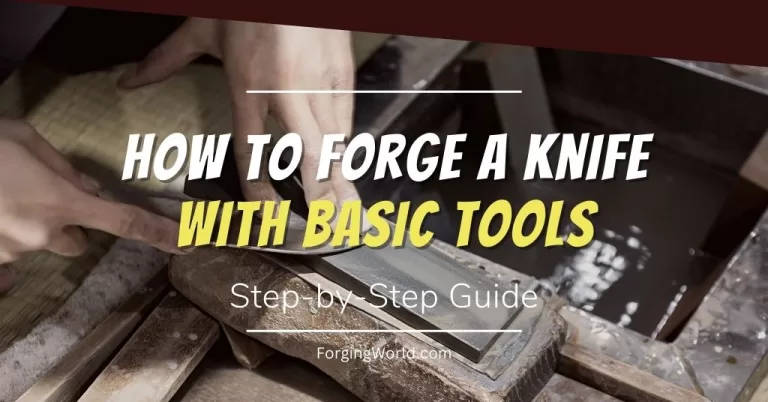Titanium is getting more and more popular in the knife making industry. I see a lot of people online discussing the quality of titanium for knife making purposes. There is one side saying that titanium is not worth it while the other side says just the opposite. In today’s guide, I decided to go through every aspect of this topic and finally give you a definite answer.
In this guide we will discuss topics like:
- Does titanium make good knives?
- What is titanium?
- Comparison of titanium and steel
- Titanium pros and cons
- Do titanium knives hold an edge well?
- Can you heat treat titanium?
- Why is titanium so expensive?
Now let’s finally dive in.
What Is Titanium?
Titanium is a chemical element of group 4 of the periodic table. It is a silvery-gray and lightweight metal. Titanium is known for its high-strength and anti-corrosion properties. You will typically find titanium in high-speed aircraft parts, jewelry, the medical industry, the military, and many others.
In the blade world, titanium has been used for well over twenty years, mainly due to the boom in the tactical knife genre in the early 1990s. It was originally used in the space program for its toughness and lightweight.
After that, it bled into various military programs due to the same reasons. One of the major uses of titanium is the making of high-quality alloys. Combining steel with titanium increases steel’s toughness and corrosion resistance which results in titanium steel.
Is Titanium Good for Making Knives?
Since we know that titanium is used for knife making purposes, the only remaining question is whether it is or it isn’t a good material to make a knife out of. As I have said in the beginning, on one side there are people saying that is a bad material while the other side has nothing but praises. So which one is right? As always, I like to see both perspectives and make the answer as objective as possible. Usually, the answer is somewhere in the middle of both extremes.
Titanium is a good material for knife making if your primary concerns are lightweight and corrosion resistance. However, titanium blades don’t hold as sharp an edge as a standard steel blade. Titanium blade is more difficult to sharpen and also more expensive than steel. Titanium knives are ideal for all who spend much time around water, or performing jobs where the blade needs to be cleaned often.
It is also often used to produce knives for scuba diving that has to withstand saltwater ocean environment. In the end, it all depends on what you want the blade for. For instance, a titanium knife would make a poor hunting knife because it is duller and thicker which makes it harder to make a nice cut.
On the other hand, if you want a knife that you are going to carry a lot but use very little, titanium is an attractive choice. Also, if you work in a highly corrosive environment, titanium is a good material to choose from. Note that titanium won’t become brittle at very low temperatures as many types of steel would do.
When it comes to sharpening, it is slightly different than a steel knife. My recommendation is if you are not 100% of what you are doing, it would be best to give it to some professional.
After all, it is not the best knife material for general purposes, but for a lot of things, it is truly outstanding. So, give it a shot and see how it works. This is the only way to actually find out for yourself.
What Is Harder Titanium or Steel?
Until now, we know that titanium is a relatively good material for bladesmithing. Next, we will found out how does it stand in comparison with other steel types like stainless steel and high-carbon steel.
Titanium is softer than steel so its knives can’t hold the edge, as well as high-carbon steel. It will never become razor-sharp like a good high-carbon steel blade. In terms of hardness level (Brinell), titanium is 70 whereas steel is 120. On the other side, titanium is much stronger than steel. Unfortunately, the extra thickness of the titanium blade makes it hard to cut through tough materials.
It is also good to keep in mind that although steel is about 40% weaker than steel by weight, the steel is stronger than titanium by volume. This is primarily due to a greater density. That means that a titanium knife has to be thicker to resist snapping. Note that the titanium blade will still be much lighter but the extra thickness makes it more difficult to cut effectively. Titanium is nonmagnetic which provides a good use in certain applications.
Can You Heat Treat Titanium?
When it comes to titanium blades, it is all about the details. Unlike other grades of steel, titanium requires very precise heat treatment, so be extremely careful. Otherwise, you could completely ruin your knife or to be even more precise a potential knife.
Titanium can be heat-treated but it requires very precise temperature measurement. In fact, temperature measurement and control have to be exact or at least ±10 °F (5.5°C). Note that when heating over 1730°F (943°C), titanium mustn’t be in any contact with stainless steel or a nickel alloy. Depending on the type of alloy, titanium is quenched in water, oil, or air.
Step 1)
Call your manufacturer to find out the type of alloy your titanium is made of. It is one of the following:
- Alpha – heat treatment doesn’t help to strengthen it. It is low-medium strength, formable, weldable, and has good notch toughness
- Near alpha – good creep resistance with medium strength
- Alpha-beta – heat treatment can strengthen it. It is medium-high strength, good creep resistance, high formability. Ti-6Al-4V is the most popular alloy in this category.
- Beta – also strengthened by heat treatment. It has high strength and decent creep resistance. It is also prone to a brittle transition temperature.
Step 2)
Clean the forge where your titanium will be hardened and set the forging temperature to the correct specification.
Alpha alloy – 1,800 to 1850 °F
Alpha-beta alloy – 1,750 to 1,775 °F
Beta alloy – 1,425 to 1,475 °F
Step 3)
Place the titanium into the forge and make sure you wear protective garb
Step 4)
Remove the titanium from the forge using the charging tongs.
Step 5)
Quench it in a suitable medium.
For alpha-beta and beta alloy – water or air quenching
For alpha alloys – oil quenching
If the quenching process is done in water or oil, make sure to quench the thick sections first. The cylindrical pieces should be straight up and flat ones on edge.
Step 6)
Reheat the forge to the following temperatures:
For alpha alloys – somewhere between 1,050 and 1,010 °F
For alpha-beta alloys – somewhere between 900 and 1,100 °F
For beta alloys – somewhere between 800 and 900 °F
Step 7)
Remove the material after a minimum of two hours and let it air cool.
Pros and Cons of Using Titanium for Knife Making
Lets finally analyze its pros and cons for knife making purposes.
Pros of Titanium for Knife Making
- Lightweight
- Excellent resistance to corrosion
- High-strength
- Good at withstanding higher and lower temperatures
- Less toxic than steel
- Visually appealing
Cons of Titanium for Knife Making
- Expensive
- Brittleness
- Bad edge retention
- Sharpening my be difficult
- Deforms more easily than steel
- Difficult heat treating process
Why Is Titanium So Expensive?
This is a very common question so I decided to answer it in this guide. Typically, this is the question of those who have never used it before. Ok, so here is the thing.
The price of titanium is actually dictated by a few different factors. The first and also the major one is because titanium is rarer than other metals. That alone makes the processing much more expensive. Other factors playing a significant role in titanium price are the grade of titanium, source of Country of origin, type of material certification, amount of processing, material specification and finally order size.
Rarer titanium grades – such as CP Grade 4 and CP Grade 7 are usually more expensive than ones where titanium has been bonded with vanadium and aluminum. Titanium is also more easily fabricated and weldable. Of course, that generally comes at a higher price.
The price is high also due to the more complicated processing. Namely, titanium cant be extracted by simply using carbon as it produces titanium carbide (this is why it is brittle). Instead, the extraction involves several stages that are also known as the Kroll Process. High-market price actually lies in the complexity and energy expended in processing.
Due to its high melting point, temperatures required for processing are very high. Conversion of the metal to ingots calculates for 30% of the entire process cost. Not only that, but labor is also more intensive. Just to give you some idea of how original material is lost during this process, look at the aerospace industry. For instance, 1kg of the finished product has come from almost 11 kg of titanium.
Conclusion
And that is it my friends. As you can see, we have covered the most important questions regarding titanium usage for knife making. If you are interested in starting knife making but you don’t know what tool you need, I highly recommend reading The Definite List of Knife Making Tools for Beginners and7 Knife Making Power Tools for Maximum Productivity.



